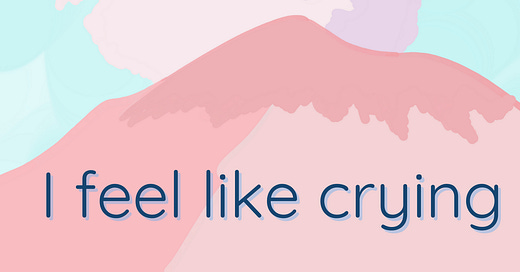Asking for permission to cry has been one of the most interesting questions I’ve heard as a therapist. Along with crying, there are often a series of apologies that follow crying. Of course, the reasons why individuals feel the need to ask for permission or continuously apologize for their crying may be associated with their upbringing and/or mental health symptoms.
Many of us grew up in home environments where crying was perhaps not tolerated or even ignored. Throughout life, we might start believing that crying often repels individuals from our life or might be associated with adverse experiences, so we might avoid doing it. While crying is as natural as any of our physiological responses, there are sometimes things we should be mindful of when processing why we cry.
Crying spells and consistent tearfulness might be a signal of our current emotional state. This signal or symptom is often associated with emotional dysregulation. Research shows that emotional dysregulation is a hallmark experience of depression. Maybe throughout this brief article, you’ve connected the dots that crying results from our emotional experiences and mental state that is associated with depression and/or even anxiety.
Coming back to experiences when individuals ask for permission to cry, the answer is always yes. You’re allowed to experience emotions. In therapy, we also find other ways to respond and process emotions as well as crying. In a nutshell, therapy is a journey of emotional exploration and processing.
Key takeaways:
Yes, you can cry in therapy; it’s a natural emotional response
Crying spells and consistent tearfulness are associated with emotional dysregulation
Emotions and crying are often associated with depression and/or anxiety
In therapy, we explore alternative ways to respond and process emotions, including crying




